Margaret of Görz-Tyrol, a granddaughter of Duke Meinhard of Carinthia
Berthold VII, Count of Henneberg-Schleusingen (nicknamed the Wise, born: 1272 in Schleusingen; died: 13 April 1340, Schleusingen) was Count of Henneberg- Schleusingen from 1284 to 1340. He was the son of Count Berthold V of Henneberg-Schleusingen (d. 1284) and his wife Sophie of Schwarzburg (d. 1279), the daughter of Count Günther VII of Schwarzburg
Adelheid (1268–1317), the daughter of Henry I of Hesse
Frederick I, called the Brave or the Bitten (German Friedrich der Freidige or Friedrich der Gebissene; 1257 – 16 November 1323) was margrave of Meissen and landgrave of Thuringia.
Born in Eisenach, Frederick was the son of Albert the Degenerate and Margaret of Germany. According to legend, his mother, fleeing her philandering husband in 1270, was overcome by the pain of parting and bit Frederick on the cheek: therefore he became known as the Bitten.

Louis IV (German: Ludwig; 1 April 1282 – 11 October 1347), called the Bavarian, of the house of Wittelsbach, was King of the Romans from 1314, King of Italy from 1327, and Holy Roman Emperor from 1328.
Louis IV was Duke of Upper Bavaria from 1294/1301 together with his elder brother Rudolf I, served as Margrave of Brandenburguntil 1323, as Count Palatine of the Rhine until 1329, and he became Duke of Lower Bavaria in 1340. He obtained the titles Count ofHainaut, Holland, Zeeland, and Friesland in 1345 when his wife Margaret inherited them.
Louis was born in Munich, the son of Louis II, Duke of Upper Bavaria and Count Palatine of the Rhine, and Matilda, a daughter of King Rudolph I.

Beatrice of Silesia (also known as Beatrice of Świdnica; Polish: Beatrycze Świdnicka, German: Beatrix von Schweidnitz ; 1290 – 25 August 1322), was a Polish princess member of the House of Piast in the Silesian branch of Jawor-Świdnica and by marriage Duchess of Bavaria and German Queen.
She was the second daughter of Bolko I the Strict, Duke of Jawor-Świdnica, by his wife Beatrice, daughter of Otto V, Margrave of Brandenburg-Salzwedel.[1][2]

Frederick II (or III) (13 December 1272 – 25 June 1337) was the regent (from 1291) and subsequently King of Sicily from 1295 until his death. He was the third son of Peter III of Aragon and served in the War of the Sicilian Vespers on behalf of his father and brothers, Alfonso ΙΙΙ and James ΙΙ. He was confirmed as King of Trinacria (another name for the island of Sicily) by the Peace of Caltabellotta in 1302. His reign saw important constitutional reforms: the Constitutiones regales, Capitula alia, and Ordinationes generales.

Eleanor of Anjou (August 1289 – 9 August 1341) was the Queen consort of Frederick III of Sicily. She was a member of theCapetian House of Anjou by birth.
She was the third daughter of Charles II of Naples and Mary of Hungary.

Magnus I (1304–1369), called the Pious (Latin Pius), was duke of Brunswick-Lüneburg.
The son of Albert the Fat, Duke of Brunswick-Lüneburg,
Sophia of Brandenburg-Stendal (1300-1356) was a daughter of Margrave Henry I (1256–1318) and his wife Agnes of Bavaria(1276–1345).
Bernhard III, Prince of Anhalt-Bernburg (died 20 August 1348) was a German prince of the House of Ascania and ruler of the principality of Anhalt-Bernburg.
He was the eldest son of Bernhard II, Prince of Anhalt-Bernburg, by his wife Helene, daughter of Wizlaw II, Prince of Rügen.

Agnes (ca. 1310 – 4 January 1338), daughter of Rudolph I, Elector of Saxony and Duke of Saxe-Wittenberg. Her paternal grandmother and namesake Agnes of Habsburg was a daughter of Rudolph I, King of the Romans. The spouses were third cousins: Agnes's great-grandfather Albert I, Duke of Saxony, was a brother of Henry I, Count of Anhalt, Bernhard's great-grandfather.ç
Barnim IV of Pomerania (1325 – 22 August 1365) was a Duke of Pomerania-Wolgast-Rügen.
He was the second son of Duke WartislawIV of Pomerania-Wolgast and the brother of Bogislaw V and Wartislaw V.
John I, Duke of Mecklenburg [-Stargard] (1326 - 9 August 1392/9 February 1393), was from 1344 to 1352 Duke of Mecklenburgfrom 1344 to 1352 and Duke of Mecklenburg-Stargard from 1352 to 1392.
He was probably the youngest child from the second marriage of Lord Henry II "the Lion" of Mecklenburg and Anna of Saxe-Wittenberg, a daughter of Duke Albert II of Saxe-Wittenberg.
Anna was a daughter of the count Adolf VII of Pinneberg and Schauenburg
Enno Cirksena Von Greetsiel Born to Edzard Cirksena and Etta Von Visquard.
ç
Otto II, Count of Rietberg (died 18 July 1389) was the ruling Count of Rietberg from 1365 until his death.
He was the son of Conrad III and his wife Ermeswint of Reifferscheidt.
Kunigunde von Oldenburg was born circa 1360 to Konrad II. von Oldenburg (c1336-1401) and Kunigunde von Diepholz
Gumprecht I, count of Neuenahr, lord of Alpen
Gumprecht I, Graf von Neuenahr, Herr zu Alpen
† 1425
Philippa von Heinsberg
Otto VI, Count of Tecklenburg (died 1388) was the only son of Count Nicholas I and his wife, Helena of Oldenburg-Wildeshausen-Alt-Bruchhausen. In 1367, he succeeded his father as count of Tecklenburg-Ibbenbüren and count of Lingen and Cloppenburg. In 1376, he became pledge holder of Iburg.
Frederick III of Moers (1354 – 12 May 1417) was a German nobleman. He was Count of Moers by inheritance and Count of Saarwerden by jure uxoris.[1]
Frederick was the son of Count Dietrich IV of Moers and his wife Elisabeth of Zuilen, heiress of Baër. He succeeded his father as Count of Moers in 1372, at the age of 17, and ruled the county for the next 45 years.
Eric I of Saxe-Lauenburg (c.1280–1360) was a son of John I, Duke of Saxony, and Ingeborg Birgersdotter of Småland (*ca. 1253–30 June 1302*, Mölln), a daughter or grandchild of Birger jarl.
Elisabeth of Pomerania (*1291–after 16 October 1349*), daughter of Bogislaw IV, Duke of Pomerania.
Magnus (1324–1373), called Magnus with the Necklace (Latin: Magnus Torquatus) or Magnus II, was Duke of Brunswick-Lüneburg, ruling the Brunswick-Lüneburg principalities of Wolfenbüttel (colloquially also called Brunswick) and, temporarily,Lüneburg.



Magnus (1324–1373), called Magnus with the Necklace (Latin: Magnus Torquatus) or Magnus II, was Duke of Brunswick-Lüneburg, ruling the Brunswick-Lüneburg principalities of Wolfenbüttel (colloquially also called Brunswick) and, temporarily,Lüneburg.
Magnus was the son of Magnus the Pious, Duke of Brunswick-Lüneburg (Wolfenbüttel).

Catherine, daughter of Bernhard III, Prince of Anhalt-Bernburg
Agnes of Holstein (died: 1386) was a Countess of Holstein-Kiel by birth and by marriage a Duchess of Saxe-Lauenburg. She was the daughter of Count John III of Holstein-Plön (d. 1359) and Catherine (d. 1327), daughter of Duke Henry III of Silesia-Glogau.
Frederick III, the Strict (14 December 1332, Dresden – 21 May 1381, Altenburg), Landgrave of Thuringia and Margrave of Meissen, was the son of Frederick II, Margrave of Meissen and Mathilde of Bavaria.

Catherine of Henneberg (German: Katharina von Henneberg ; c. 1334, Schleusingen – 15 July 1397, Meissen) was a Countess of Henneberg by birth and from 1347 by marriage Margravine of Meissen, Landgravine of Thuringia, etc. She was the wife of Margrave Frederick the Severe of Meissen. Via her, the House of Wettin inherited her father's Franconian possessions.
Catherine was the second of four daughters of Count Henry IV of Henneberg-Schleusingen and his wife Judith of Brandenburg-Salzwedel.
Henry of Brunswick-Lüneburg (Latin Henricus, died 14 October 1416), Duke of Brunswick-Lüneburg, called Henry the Mild, was prince of Lüneburg from 1388 to 1409 jointly with his brother Bernard I, Duke of Brunswick-Lüneburg, from 1400 to 1409 also of Wolfenbüttel, and from 1409 until his death sole prince of Lüneburg.
Henry was the fourth son of Magnus with the Necklace, Duke of Brunswick-Lüneburg.
John II of Oldenburg (German: Johann II. von Oldenburg; died c. 1314 or 1316) was Count of Oldenburg from 1275 until around 1301.
He was the son of Christian III, Count of Oldenburg and Hedwig von Oldenburg in Wildeshausen
Gerhard IV (c. 1277 – 1323), was Count Holstein-Plön from 1312 until his death.
He was the eldest son of Gerhard II and his wife, Ingeborg of Sweden.

Anastasia of Schwerin (c. 1291 – after 1316), a daughter of Nicholas I of Schwerin,
Dietrich III von Honstein zu Klettenberg (Honstein), Graf 1281-1330
Dietrich II, Graf von Honstein zu Klettenberg y Sophie von Anhalt-Bernburg, Gräfin von Honstein-Klettenberg
Elisabeth von Waldeck, Gräfin zu Honstein-Klettenberg 1281-1310
Magnus I, Herzog von Braunschweig-Wolfenbüttel 1304-69 Albrecht II, Herzog von Braunschweig y Rixa von Werle
Sophia von Brandenburg 1305-56 Heinrich I, Markgraf von Brandenburg y Agnes / Anna von Hessen
Gerhard III of Holstein-Rendsburg (c. 1292 – 1 April 1340), sometimes called Gerhard the Great, and in Denmark also known as Count Gert or den kullede greve ("the bald count"), was a German prince who ruled Schauenburg and Holstein-Rendsburg and during the interregnum of 1332–40 also a large part of Denmark.
His father was Henry I, Count of Holstein-Rendsburg (c. 1258 – 5 August 1304).
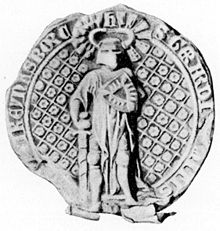
Sophia of Werle, the daughter of Nicholas II of Werle and Richeza, the daughter of Eric V of Denmark
Albert II (Albrecht II) Duke of Mecklenburg (c. 1318 – 18 February 1379) was a feudal lord in Northern Germany on the shores of the Baltic Sea. He reigned as the head of the House of Mecklenburg. His princely seat was located in Schwerin beginning in the 1350s.
Albert was born in Schwerin as the second (but eldest surviving) son of Lord Henry II of Mecklenburg (c. 1266-1329), Lord ofStargard (Stari Gard), of the old Vendic princely clan of the Obotrites, and his second wife Princess Anna of Saxe-Wittenberg (d. 1327), of the princely Ascanian House.
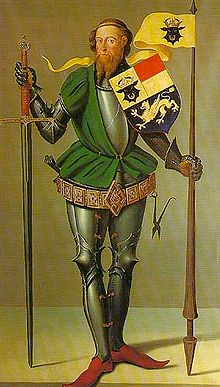
Euphemia of Sweden (Swedish: Eufemia Eriksdotter; 1317 – 16 June 1370) was a Swedish princess, spouse of Albert II, Duke of Mecklenburg, Duchess consort of Mecklenburg, heiress of Sweden and of Norway, and mother of King Albert of Sweden.
Euphemia was born in 1317 to Eric of Sweden (b. c. 1282, murdered 1318), Duke of Södermanland, second son of King Magnus I of Sweden, and Princess Ingeborg of Norway (1301 – c. 1360), the heiress and the only legitimate daughter of King Haakon V of Norway, whose hereditary Kingdom of Norway thus became the inheritance of Euphemia and her brothers.
Magnus I (1304–1369), called the Pious (Latin Pius), was duke of Brunswick-Lüneburg.
The son of Albert the Fat, Duke of Brunswick-Lüneburg,
Sophia of Brandenburg-Stendal (1300-1356) was a daughter of Margrave Henry I (1256–1318) and his wife Agnes of Bavaria(1276–1345).
Bernhard III, Prince of Anhalt-Bernburg (died 20 August 1348) was a German prince of the House of Ascania and ruler of the principality of Anhalt-Bernburg.
He was the eldest son of Bernhard II, Prince of Anhalt-Bernburg, by his wife Helene, daughter of Wizlaw II, Prince of Rügen.

Agnes (ca. 1310 – 4 January 1338), daughter of Rudolph I, Elector of Saxony and Duke of Saxe-Wittenberg. Her paternal grandmother and namesake Agnes of Habsburg was a daughter of Rudolph I, King of the Romans. The spouses were third cousins: Agnes's great-grandfather Albert I, Duke of Saxony, was a brother of Henry I, Count of Anhalt,
Nicholas I of Tecklenburg (also known as Nicholas I of Schwerin; died: 1367) was a son of Gunzelin VI, Count of Schwerin and Richardis, the daughter of Count Otto IV of Tecklenburg
Helena, the daughter of Count Otto of Oldenburg-Wildeshausen-Altbruchhausen
Bernhard V, Lord of Lippe (c. 1290 – before 1365) was a member of the House of Lippe and was Lord of Rheda from 1344 until his death.
Bernard was the son of Lord Simon I and Adelaide of Waldeck. His eldest brother was also called Bernard V and was Prince-Bishop of Paderborn.
Richarda of the Marck
Dietrich V. Graf? von MörsJohann III, conde de SaarwerdenJohann III., Graf von SaarwerdenClara von Vinstingen-Brackenkopf
Otto II. von Hoya (* 1271; † 1324) war von 1313 bis 1324 regierender Graf von Hoya. Heinrich II "with the axe" count of Hoya yJutta countess of Ravensberg
|
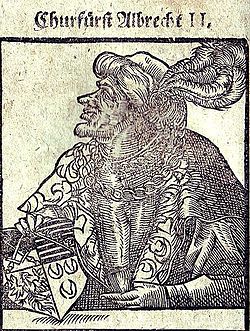
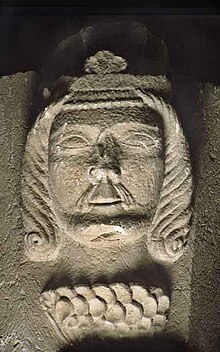
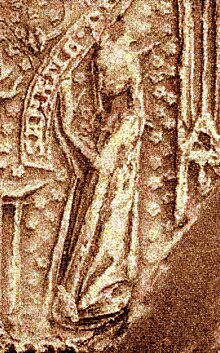


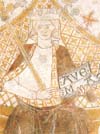












 ç
ç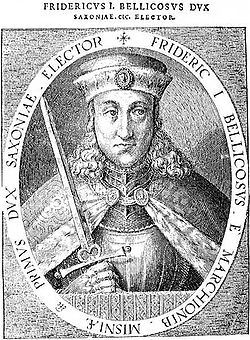
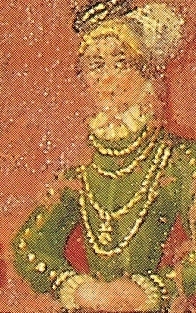
No hay comentarios:
Publicar un comentario